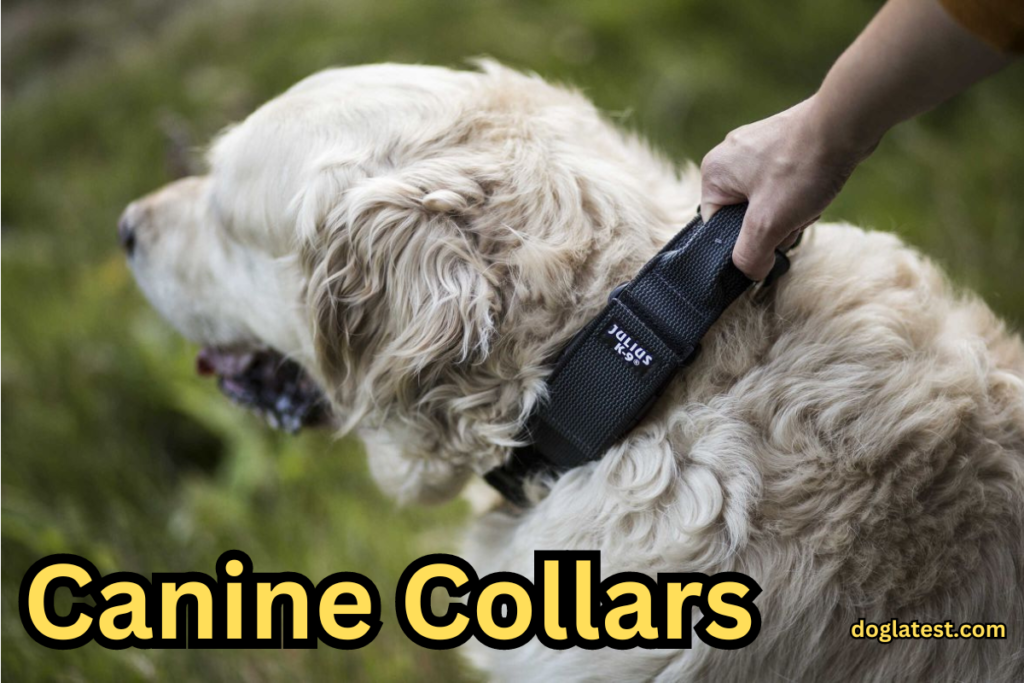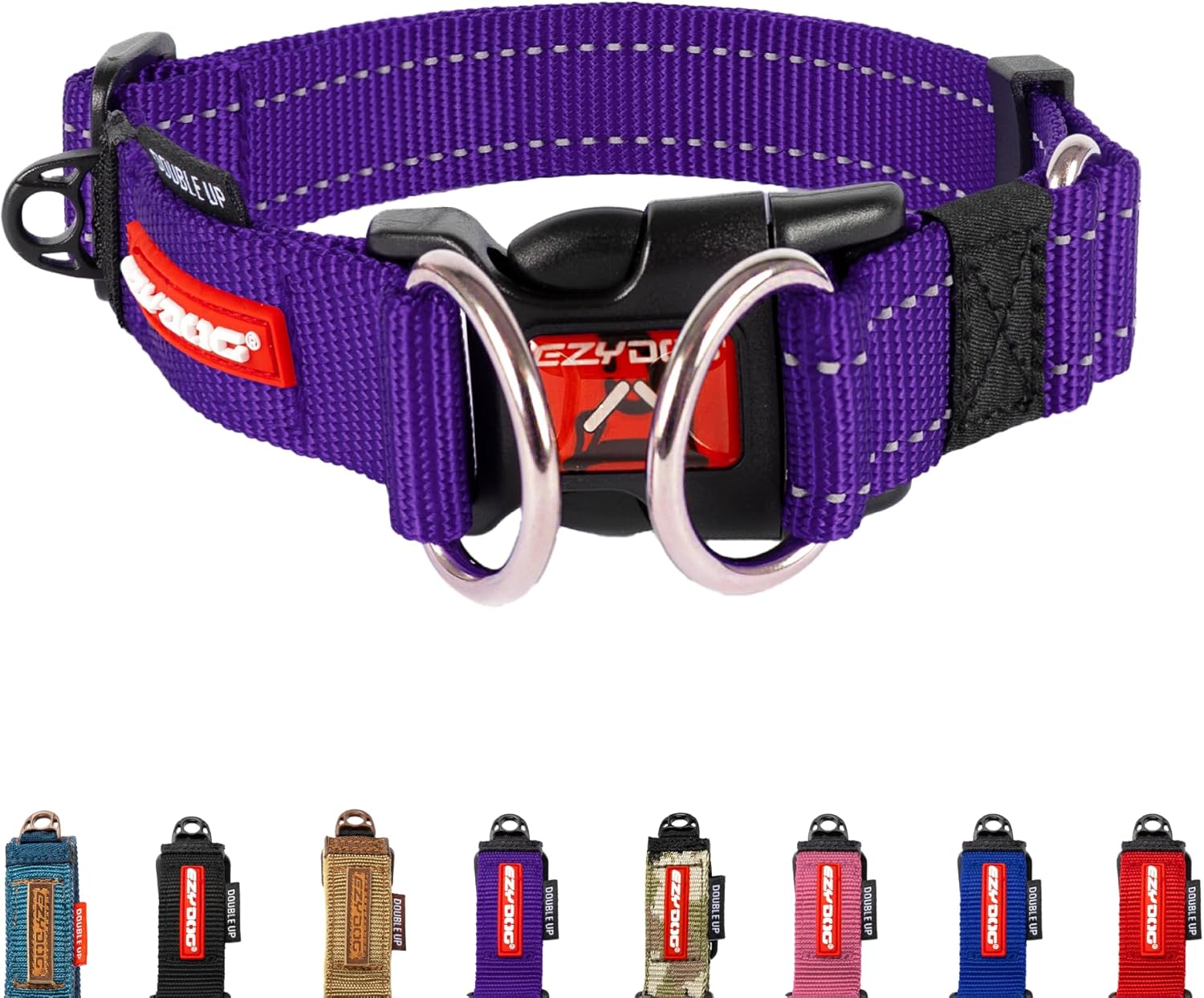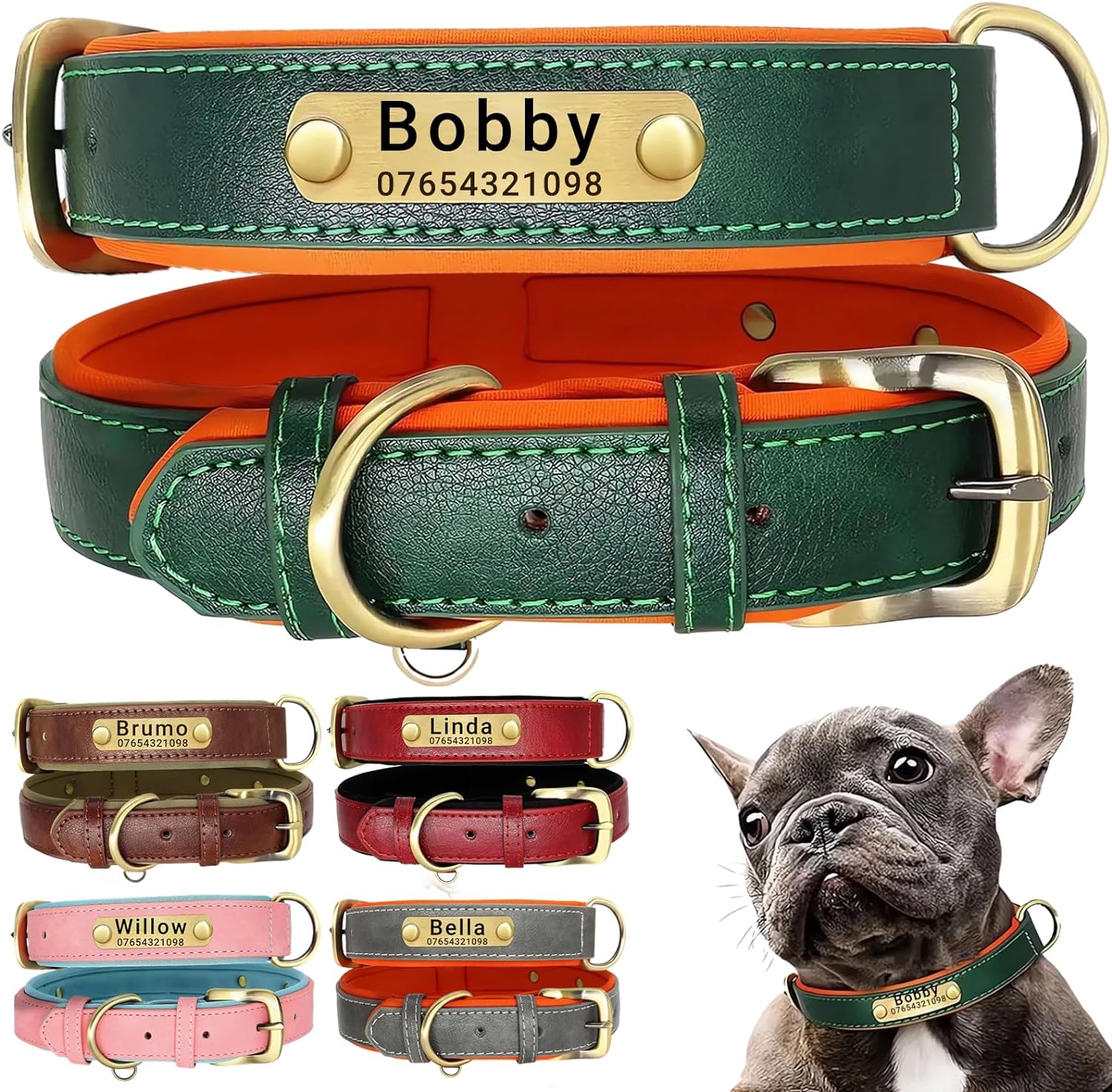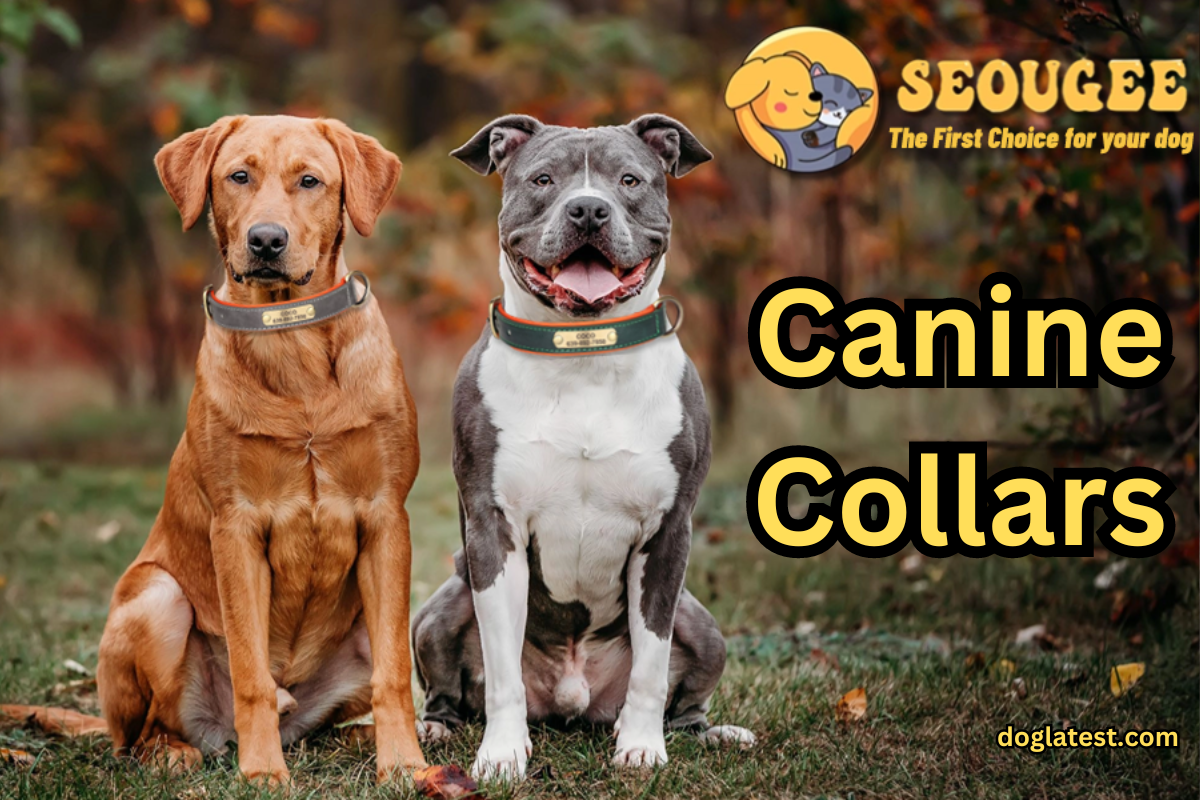we want to provide them with the best Canine Collars of everything. From the comfiest beds to the tastiest treats, we spare no expense in ensuring their happiness and well-being. One essential accessory that every dog owner must invest in is a high-quality collar
Not only does it serve as a means of identification, but it also plays a crucial role in maintaining control and safety during walks. With the wide variety of options available in the market, finding the perfect collar for your canine companion can be a daunting task

That’s why we’ve done the research for you and compiled a list of the best canine collars for all sizes and breeds. Whether you have a tiny Chihuahua or a majestic Great Dane, we’ve got you covered. So read on to explore our top picks and find the perfect collar that combines style, comfort, and functionality for your furry friend.
Can I Use a Leash Instead of a Canine Collars ?
the most common accessory is the canine collars. However, have you ever wondered if you could use a leash instead? The short answer is yes, you can use a leash instead of a collar, but it’s important to understand the differences between the two and what works best for you and your canine companion.
Firstly, let’s discuss the purpose of each accessory. Canine collars are primarily used for identification purposes, as well as attaching tags with important contact information. They also serve as a point of attachment for a leash. On the other hand, a leash is the actual tool that allows you to control your dog’s movements during a walk.
While canine collars may be necessary for identification purposes, using a leash can provide additional benefits. Unlike collars, leashes come in different lengths and styles, allowing you to choose what works best for your dog’s size and training needs. Some dogs may feel more comfortable and secure with a harness or a head halter attached to a leash rather than a collar. It’s important to note that using a leash also gives you more control over your dog’s movements, especially if they tend to pull or lunge.
What Type of Collar is Best for Training?
choosing the right collar can make all the difference. With so many options available, it can be overwhelming to determine which is best for your canine companion. Each type of collar has its own advantages and disadvantages, so it’s essential to understand the different options before making a decision.
One popular choice is the traditional buckle collar. This collar is made of sturdy materials such as nylon or leather and can be easily adjusted to fit your dog’s neck. It’s a great option for basic obedience training and everyday use. However, this type of collar may not be suitable for dogs that pull on the leash as it puts pressure directly on the neck.

Product size: 45 x 4 x 2 cm Weight: 50 g D-Rings: 2 Material: Stainless Steel Buckle: Yes Feature: Flexible
If your dog tends to pull, a martingale collar might be a better choice. This type of collar has a limited slip design that tightens only to a certain point when your dog pulls, preventing them from slipping out of the collar. Martingale collars are an excellent tool for leash training and provide a gentle yet effective way to correct pulling behavior without hurting your dog.
For dogs with more challenging behavior issues, a head canine collars or harness might be necessary. These collars give you more control over your dog’s movements and redirect their attention away from pulling. Head collars wrap around your dog’s muzzle, providing control over their head movements. Harnesses distribute pressure evenly across the chest and shoulders, preventing neck strain and discomfort.
In the end, the best type of collar for training will depend on your dog’s individual needs and behavior. It’s crucial to consider factors such as size, strength, and temperament when making your decision. Consulting with a professional dog trainer can also provide valuable guidance and recommendations on which collar will be most effective for your furry friend. Remember, the goal is to train your dog in a humane and positive manner, so choose a collar that allows you to achieve that while keeping your dog safe and comfortable.
Are Dog Collars Dangerous?
Dog collars are a common accessory for our furry friends, but are they really safe? Many pet owners may not be aware of the potential dangers associated with canine collars. While collars can be useful for identification purposes and holding a leash, they can also pose risks to dogs’ safety and well-being.
One major concern is collar-related injuries. If a collar is too tight or fitted incorrectly, it can cause discomfort, skin irritation, or even choking. Additionally, dogs who engage in rough play or frequently pull on their leash may be at risk of neck injuries from the pressure applied by the collar. It is crucial for pet owners to regularly check the fit of their dogs’ collars and opt for breakaway or quick-release options to minimize the risk of injury.

Personalize your dog’s collar with ease thanks to our flexible lettering board. The board bends to match the natural curvature of your dog’s neck
Material: Leather Weight: 0.1 cm Size: 13 x 1.5 cm Personalization: Yes Life Stage: All Life Stages Color: Green Gender: All
Another potential danger is the use of collars during unsupervised activities or when dogs are left alone. Collars can become caught on objects, such as furniture or fence posts, leading to strangulation or injury. This is especially true for dogs who are left outdoors unattended or those who enjoy exploring off-leash. Considering the risks, it is advisable to remove collars when dogs do not require immediate supervision.
In recent years, there has been a growing trend towards alternative options such as harnesses, which distribute force more evenly across a dog’s body and reduce strain on the neck. These can be particularly beneficial for small or delicate breeds, as well as dogs with respiratory or neck issues. It is important for pet owners to consult with a veterinarian or professional trainer to determine the best option for their dog’s individual needs.
Is It Cruel to Keep a Dog on a Leash?
Leashing a dog is a common practice for pet owners, but the question of whether it’s cruel to keep a dog on a leash has sparked a heated debate among animal enthusiasts. While some argue that leashing restricts a dog’s freedom and hinders their natural instincts, others believe it’s necessary for their safety and the safety of others. Here’s a closer look at both sides of the argument.
Advocates against leashing argue that it denies dogs the ability to fully explore their surroundings, inhibiting their natural behaviors and instincts. Dogs are instinctively curious creatures, and being confined to a leash may prevent them from engaging in activities such as running freely or interacting with other canines. Additionally, canines are social animals, and being on a leash can limit their ability to interact with their environment and potentially lead to frustration and anxiety.
However, proponents of leashing argue that it’s crucial for the safety of the dog and those around them. A leash provides control and prevents dogs from wandering into dangerous situations, such as traffic or encountering aggressive animals. It also ensures that dogs won’t get lost or accidentally injure themselves while exploring unfamiliar territories. Canine collars, for example, often have built-in safety features such as reflective materials or LED lights, further enhancing the visibility of the dog to prevent accidents.
Finding a balance between freedom and safety is essential when it comes to leashing dogs. It’s important for owners to provide enough opportunity for exercise and mental stimulation outside of leash time, such as regular visits to dog parks or designated off-leash areas. Additionally, training and socializing dogs from an early age can help them learn appropriate behaviors when on a leash and make the experience more enjoyable for both the dog and its owner.
Does a Leash Count as Restraint?
keeping our furry friends safe and in control, a leash plays a crucial role. It allows us to keep them close and prevent them from running off into potential danger. However, the question arises: does a leash count as restraint? While it may seem like an obvious answer, there are different perspectives to consider.
A leash can certainly be seen as a form of restraint since it limits a dog’s freedom of movement. It keeps them within a certain range and prevents them from wandering off too far. Moreover, it allows us to guide and control their behavior, ensuring their safety and the safety of those around them. In this sense, a leash can be thought of as a necessary tool for responsible pet ownership.
On the other hand, some argue that a leash is not truly restraint in the same sense as other forms of confinement such as crates or cages. Unlike those methods, a leash still allows dogs to explore their surroundings to some extent. It gives them the opportunity to exercise, socialize, and experience the world around them, albeit within certain limitations. It can be seen as a means of granting dogs a reasonable level of freedom while still providing guidance and protection.
Ultimately, whether a leash is considered restraint or not depends on one’s perspective and interpretation. However, what remains universally important is the need for responsible and humane handling of our pets. Canine collars, leashes, and other forms of restraint should be used with care and in a manner that prioritizes the well-being and comfort of our four-legged companions.
Can You Leave a Harness on All Day?
When it comes to keeping our canine collars companions safe and secure, we often turn to canine collars and harnesses. But a common question that arises is whether it is safe to leave a harness on all day. While harnesses can be a great tool for walking and training, it is generally not recommended to leave them on your dog for extended periods of time.
One of the main reasons why leaving a harness on all day is not a good idea is because it can lead to discomfort and skin irritations. Constant pressure and rubbing from the harness can cause chafing and rashes, especially in dogs with sensitive skin. Additionally, if the harness is not properly fitted, it can restrict your dog’s movement and make them feel uncomfortable.
Another concern with leaving a harness on all day is the risk of accidents or injuries. Dogs are naturally curious and can get their harness snagged on furniture or other objects, potentially causing them harm if they try to free themselves. Moreover, prolonged wear of a harness can also lead to muscle atrophy or soreness, as it limits a dog’s natural range of motion.
So, while harnesses serve an essential purpose in certain situations, such as walking or training, it is generally best to remove them once you’re done. It’s important to prioritize your dog’s comfort and well-being by giving them adequate breaks from wearing a harness. Remember, a happy and healthy pup is a much happier companion for you!

